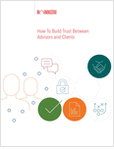American workers ages 35 to 54, better known as Generation X, particularly single working parents, are more concerned about sluggish finances and expenses related to emotional and physical health than saving for retirement, according to fresh research from Guardian Life Insurance Company of America.
These findings are part of the Fourth Annual Guardian Workplace Benefits Study. The 12-page report entitled “Mind, Body and Wallet” was released earlier this year. It evaluated the “financial, physical and emotional wellness” of 1,439 employees nationwide who worked for companies with at least five employees. About 277 responses were from part-time permanent workers, contract and non-permanent workers.
Related: 8 reasons you should be selling to Generation X
At least 1,204 employee benefit decision makers survey were from diverse industries. The report included input from business executives, human resources and financial management professionals. The survey was conducted in spring 2016.
“Working Americans face financial difficulties, which can be stressful and makes it hard to focus on their overall well-being,” said Dave Mahder, vice president and chief marketing officer of Guardian’s Group and Worksite Markets business in a press release statement.
Unlike their baby boomer parents, research indicates Gen Xers and single heads of households are more worried about paying for today than saving for tomorrow. What could help? More employers offering such substantive benefits as college tuition reimbursement, discounted gym memberships, flex-time, telecommuting options and an array of retirement savings options.
Gen Xers comprise roughly 30 percent of all American workers.
Single parents, identified as both Gen Xers and millennials, are the most cash-strapped segment of the population. The people are often emotionally and physically drained. At least 1 out of 10 American workers describe themselves as single parents. Nearly half of those parents are millennials who earn less than $75,000 annually, according to Guardian.
Related: Forward-thinking advisors focus on women
American workers, the report said, are still struggling with the aftermath of the 2008 economic downturn. About 40 percent of Guardian’s survey participants blamed “stagnant wages along with the economic downturn” for their current financial woes. The Great Recession led to cost-cutting in all industries and suppressed wages and employee benefit programs across the board.
“While some have recovered financially since then, most [Gen Xers and millennials] are in the prime of the expensive family raising/child education years,” said Gene Lanzoni, Guardian’s assistant vice president for Group & Worksite Marketing – Thought Leadership.
-
-
-
- The Guardian study further revealed: One in four workers has no life insurance.
- One in three workers (and one in two millennials) has no disability insurance.
- One in five workers (and one in three single parents) has no retirement plan.
-
-
“Even among people working full-time with benefits, many still do not have access to adequate health insurance coverage or retirement plans,” Mahder said. “And few take advantage of health and wellness programs available through their employers, which often contain a much broader menu of resources than worker’s realize.”
The uneasy financial situation that Gen Xers and millennials currently face is vastly different from the security and peace of mind their baby boomer parents experienced at the same point of their lives.








 March 15, 2017 at 02:30 AM
March 15, 2017 at 02:30 AM










 American workers, the report said, are still struggling with the aftermath of the 2008 economic downturn. (Photo: iStock)
American workers, the report said, are still struggling with the aftermath of the 2008 economic downturn. (Photo: iStock)


 Twenty percent of married American parents report they have no life insurance. (Photo: iStock)
Twenty percent of married American parents report they have no life insurance. (Photo: iStock)